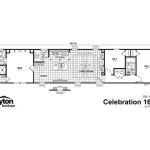Essential Aspects of Dairy Goat Shelter Plans
Providing a suitable shelter for your dairy goats is crucial for their well-being and productivity. When planning a goat shelter, several essential aspects must be considered to ensure a comfortable and healthy environment for your animals:
1. Shelter Size and Capacity
The size of your shelter will depend on the number of goats you plan to house. As a general rule, provide at least 15 to 20 square feet per goat for a comfortable living area. Consider the number of milking does, kids, and bucks that will be housed in the shelter.
2. Ventilation and Lighting
Proper ventilation is essential for removing moisture, dust, and odors from the shelter. Design your shelter with adequate openings for natural cross-ventilation. Windows and doors can also be incorporated for additional airflow. Ensure there is sufficient natural light, as goats prefer well-lit areas.
3. Roofing and Flooring
The roof of your shelter should provide protection from rain, snow, and direct sunlight. Use durable materials like metal sheets or corrugated panels for a sturdy and long-lasting roof. The flooring should be well-drained to prevent moisture accumulation, which can lead to health issues. Consider using concrete, gravel, or rubber mats for easy cleaning and comfort.
4. Bedding and Insulation
Provide a comfortable bedding area for your goats to rest and sleep. Use materials like straw, hay, or wood chips that absorb moisture and insulate the floor. Consider adding additional insulation to the walls and ceiling during cold months to maintain a warm and dry environment.
5. Feeders and Waterers
Install easily accessible feeders and waterers within the shelter. Ensure they are placed at an appropriate height for the goats and provide enough space for all animals to feed and drink comfortably. Choose materials that are easy to clean and disinfect regularly to maintain hygiene.
6. Milking Area
If your goats will be used for milking, incorporate a dedicated milking area within the shelter. This area should be clean, well-lit, and have adequate ventilation. Consider installing a milking stand or a platform for easier milking.
7. Fencing and Separation
Provide secure fencing around the shelter to prevent escapes and protect your goats from predators. Consider using panels or wire mesh that is strong and high enough to deter animals from jumping over. Separate different goat groups, such as milking does, kids, and bucks, to minimize aggression and ensure their safety.
Conclusion
By carefully planning and incorporating these essential aspects into your dairy goat shelter, you can create a comfortable, healthy, and productive environment for your animals. Remember to consider the specific needs of your goats, consult with experienced goat keepers, and regularly maintain your shelter to ensure the well-being of your herd.

Dairy Goat Barn Floor Plan House Goats Farming

Stunning Goat Housing Plans For Your Home

Blueprint For A Goat Milking Facility Parlor Barn

The Goat Shed Part Ii Curbstone Valley

Milking Barn Milkhouse For 10 Goats

Inside The Goat Barn Dairy Goats Farming

Dairy Goat Barn Plans But Sears Is Be Emitting Some Crawling Description From Bykohuce25 Com I Searched For Th Layout

Artificial Methods Of Rearing Goats

Biosecurity Planning Guide For Canadian Goat Producers Animal Health Food Inspection Agency Dairy Barn Plans Goats
Farm Structures Ch10 Animal Housing Sheep And Goat Rabbit








